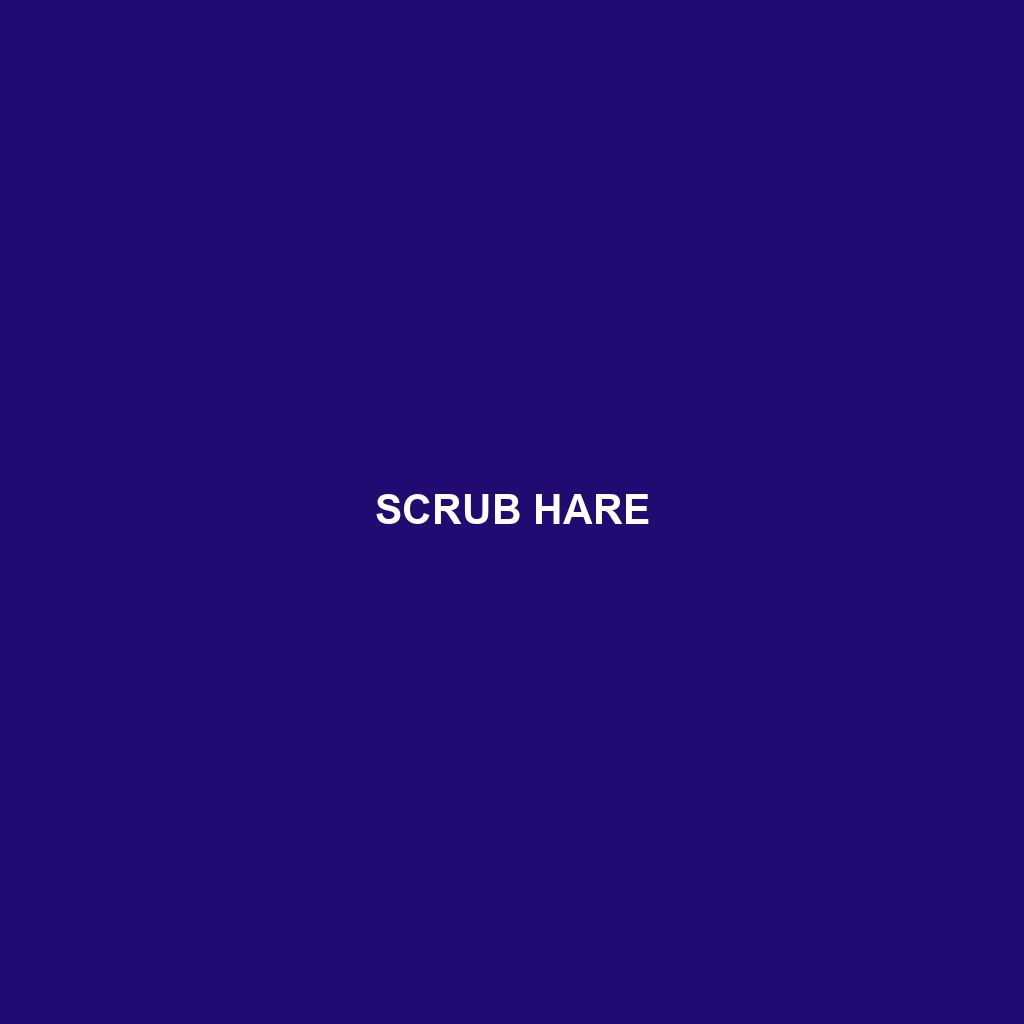Scrub Hare: An Overview
Common Name: Scrub Hare
Scientific Name: Lepus saxatilis
Habitat
The Scrub Hare is primarily found across various parts of Africa, particularly in regions such as southern Africa, including Botswana, Namibia, and parts of South Africa. They inhabit diverse environments, from arid scrublands and grasslands to open bushveld, demonstrating a preference for areas where dense vegetation provides cover.
Physical Characteristics
Scrub Hares are medium-sized leporids, measuring approximately 40 to 60 cm in length and weighing between 2.5 and 4.5 kg. They have long, powerful hind legs adapted for quick escapes. Their fur is typically a sandy or greyish-brown color, offering excellent camouflage against their natural habitats. Notably, they have large ears that can measure up to 10 cm, enhancing their ability to detect predators.
Behavior
Scrub Hares are primarily nocturnal, meaning they are most active during the night. They display a range of interesting behaviors; for instance, they often remain motionless to evade detection by predators. When disturbed, they can sprint at high speeds, employing zig-zag patterns to confuse their pursuers. Socially, Scrub Hares are solitary animals, though they sometimes gather in small groups during feeding.
Diet
The diet of the Scrub Hare consists mainly of herbaceous plants, grasses, and leaves. They are known to feed on a variety of vegetation, making them primarily herbivorous. During dry seasons, they may consume bark and woody stems, showcasing their adaptability in finding food sources under challenging conditions.
Reproduction
Scrub Hares exhibit peak breeding activity from late spring to summer. The gestation period lasts about 42 days, after which females give birth to one to four young, known as leverets. Unlike other lagomorphs, Scrub Hare leverets are born fully furred and with open eyes, capable of independent survival shortly after birth.
Conservation Status
Currently, the Scrub Hare is classified as a species of Least Concern by the IUCN, indicating that it is not currently threatened. However, habitat loss and hunting pressures pose ongoing risks to their populations in certain regions.
Interesting Facts
Did you know that Scrub Hares can leap up to 3 meters in a single bound? This incredible agility, combined with their adept camouflage, makes them fascinating subjects of study. Additionally, they can also go without water for extended periods, extracting moisture from their food.
Role in Ecosystem
Scrub Hares play a crucial role in their ecosystems as herbivores, helping to control plant growth and serving as prey for various carnivorous species, including foxes and raptors. Their feeding habits contribute to the health of their habitats, making them an essential part of the ecological balance.
